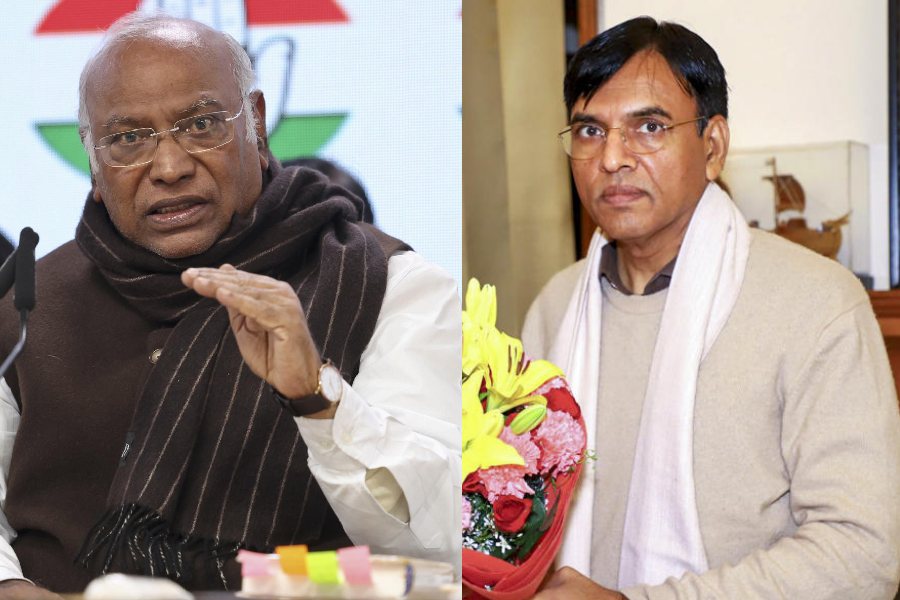 Saturday, 18 January 2025
Saturday, 18 January 2025
 Saturday, 18 January 2025
Saturday, 18 January 2025
Prime Minister Benjamin Netanyahu's office said Friday that the Israeli cabinet will meet to give final approval to a ceasefire deal with Hamas in the Gaza strip.
As part of the deal, Hamas has agreed to release the hostages that it took from Israel on October 7, 2023 and Israel has consented to a prisoner exchange involving the release of several hundred Palestinian prisoners.
In Gaza itself, Israeli warplanes kept up with intense strikes, and Palestinian authorities said late Thursday that at least 86 people were killed after the truce was unveiled.
But as it stands, Netanyahu has agreed to a ceasefire deal, marking the end of 15 months of the conflict that killed tens of thousands, left many schools and hospitals in ruins, and caused long-term damage to agricultural land.
Israel’s extensive military campaign has led to catastrophic loss of life and destruction in Gaza. Medical officials in the enclave estimate that over 46,000 Palestinians have been killed, with thousands more feared to be buried under rubble.
The official death toll includes only those bodies recovered and buried, leaving an estimated 10,000 additional fatalities uncounted due to a lack of equipment or fuel to excavate collapsed buildings.
Here’s the outline of how it started, how the conflict took shape as it comes to an end.
October 7, 2023 - the Hamas Attack
The war in the Middle-east was triggered when Palestinian gunmen from Hamas launched an unprecedented attack on southern Israel, killing 1,200 people and capturing over 250 hostages, according to Israeli reports.
The scale and coordination of the attack caught Israel off guard, prompting the government to declare a state of war. Netanyahu vowed a decisive and forceful response, signaling the start of a new and intense phase in the ongoing conflict.
In retaliation, Israel initiated airstrikes on Gaza, targeting Hamas positions and infrastructure. The strikes continued on October 8, as Israel escalated its efforts to weaken Hamas and respond to the unprecedented attack.
The Israel-Gaza conflict, rooted in a century of territorial, political, and cultural disputes, has escalated into one of the most devastating wars in modern history.
October 13-27, 2023 - Ground offensive
Israel began bombing and besieging Gaza. On October 13, it called on civilians in northern Gaza to move south.
The vast majority of Gazans have been displaced during the war, according to the United Nations.
On October 27, Israel launched a ground offensive.
November, 2023
Urban combat ensued as Israeli forces encountered fierce resistance from Hamas fighters, who utilised tunnels and civilian infrastructure for defense.
By mid-November, the death toll in Gaza had risen sharply, with the United Nations reporting over 10,000 fatalities, including a substantial number of women and children. The escalating humanitarian crisis spurred urgent calls for a ceasefire from international organisations and governments worldwide.
December, 2023
On December 4, Israeli forces launched their first big ground assault in southern Gaza, towards the main southern city, Khan Younis.
On December 6, Refaat Alareer, the author who was considered as the voice of a generation and a revered symbol of resistance and resilience was killed in an Israeli airstrike.
January, 2024
By the end of the month, the World Bank estimated the damage to be $18.5 billion, a figure nearly equivalent to the combined economic output of the West Bank and Gaza in 2022.
February, 2024
President Joe Biden, in February, publicly criticised Israel’s handling of the situation, urging the Israeli government to allow greater access for humanitarian aid into Gaza.
On February 29, Israeli forces fired on residents of northern Gaza who rushed towards a convoy of food aid trucks, killing 120 people and wounding hundreds.
April, 2024
On April 1, an Israeli strike killed seven aid workers from the US charity World Central Kitchen, which the Israeli military later described as a "tragic mistake".
On the same day, a suspected Israeli airstrike targeted Iran's embassy compound in Damascus, resulting in deaths of several military officers including a top general.
In response on April 13, Tehran launched drones and missiles against Israel in retaliation for the strike on its Damascus consulate, blamed on Israel.
A joint assessment by the World Bank and UN revealed that at least 75 per cent of Gaza’s telecommunication infrastructure was either damaged or destroyed. The Gaza Electricity Distribution Company has reportedly lost 90 per cent of its machinery and equipment and incurred losses amounting to $450m.
May 6, 2024
Hamas said it had accepted a proposal for a ceasefire, but Israel said it had not agreed to that text.
Israel told Palestinians to evacuate parts of Rafah after its forces took control of a buffer zone along the border between Gaza and Egypt, giving Israel effective authority over the Palestinian territory's entire land border.
June, 2024
By June 2024, the humanitarian crisis in Gaza was exacerbated by food and water shortages, and several UN agencies reported an alarming increase in civilian casualties.
A study published by the Lancet estimated that the real death toll of Israel’s assault on Gaza could be more than 186,000. More than six months later, the death toll now undoubtedly far exceeds even this estimate.
On June 25, the Global hunger monitor, the Integrated Food Security Phase Classification (IPC) reported that Gaza remained at high risk of famine.
July, 2024
On July 20, Israel bombarded Yemen’s port of Hodeida, after a drone attack on Tel Aviv by Iran-backed Houthi rebels who had been attacking shipping in the Gulf since November 2023 in solidarity with Gaza.
On July 27, a Hezbollah rocket killed a group of 12 children and teenagers in the Israeli-occupied Golan Heights, prompting Israel to vow retaliation.
At the Israeli-Lebanon border, gunfire exchanges intensified in July. Israel retaliated with several strikes, including one that killed Fuad Shukr, a top Hezbollah commander.
On July 31, Hamas political leader Ismail Haniyeh was killed in a strike in Iran. Israel accepted responsibility months later.
According to Oxfam, all the wastewater treatment plants and most of the sewage pumping stations in Gaza were shut down due to the Israeli-imposed “blockade on fuel and electricity.”
August, 2024
On August 1, Israel’s military confirmed the killing of Mohammed Deif, Hamas’ military chief, in an airstrike on July 13. Hamas neither confirmed nor denied Deif’s death. Palestinian officials said the strike killed 90 people.
September, 2024
On September 17 and 18, hundreds of pagers and walkie-talkies used by Hezbollah exploded in an Israeli operation. It killed 39 and wounded thousands, according to Lebanese authorities.
Israel stepped up its air campaign in Lebanon and on September 27 killed Hezbollah leader Hassan Nasrallah in a suburb of Beirut.
Days later, Israel launched a ground offensive in southern Lebanon against Hezbollah strongholds while carrying out heavy bombing across the country.
Iran launched a barrage of 200 missiles at Israel in response to the killing of Nasrallah and Haniyeh.
By this time, about 25 per cent of all structures in Gaza have been destroyed or severely damaged, according to a UN satellite assessment. Around 66 per cent of all buildings, including over 227,000 housing units, have sustained at least some damage.
The destruction extended to essential infrastructure: more than 90 per cent of school buildings, every university, most hospitals, and 70 per cent of health centers have been impacted, said the UN.
October, 2024
On October 5, Israeli forces launched a major anti-Hamas operation in northern Gaza focused on Jabalia refugee camp near Gaza City and Beit Hanoun and Beit Lahiya towns. Much of the surrounding area was razed.
On October 16, Israel killed new Hamas leader Yahya Sinwar in a shootout in Rafah. Sinwar was accused by Israel of being the mastermind in the October 7, 2023 attack.
UN agencies said, unemployment in Gaza has soared to 80 per cent, up from 50 per cent before the war, leaving almost the entire population in poverty. Educational facilities have also been devastated: nearly every school has been damaged or destroyed, and none are operational.
November, 2024
On November 14, a UN Committee said Israel’s warfare in Gaza is consistent with the characteristics of “genocide”. Israel later accused the UN of bias.
The International Criminal Court on November 21 issued arrest warrants for Netanyahu and former defence minister Yoav Gallant, as well as Hamas’s military chief Mohammed Deif, who the Israeli military said it killed in Gaza.
A truce came into force on November 27, after two months of open war between Israel and Hezbollah which left more than 4,000 dead on the Lebanese side since October 2023, according to the Lebanese health ministry.
By then, over 90 per cent of Gaza’s 2.3 million residents have been displaced, often multiple times. Nine in 10 homes in the territory have been destroyed or damaged, according to the UN.
December, 2024
80 per cent of Gaza’s territory was placed under evacuation orders that were still active in late December.
In late December, the killing of al-Faranji and her husband Ahmed Salama was confirmed by local Palestinian media and Al Jazeera journalists on the ground. The Israeli airstrike targeted their home in the Nuseirat refugee camp.
Walaa al-Faranji was known for her creativity, writing and documenting the plight of Palestinians amid Israeli bombardment.
Since the ousting of Syrian president Bashar al-Assad in December, Israel also conducted hundreds of strikes on Syria’s military sites.
January, 2025 - The ceasefire agreement
By the start of January 2025, the conflict between Israel and Hamas had raged for 15 months. Intense diplomatic efforts were underway in Qatar to negotiate a ceasefire. Egypt and Qatar played pivotal roles in facilitating discussions between the two parties, while the broader international community applied pressure to push for a resolution.
On January 8, 2025, the bodies of Israeli hostages Youssef Ziyadne and his son were discovered in a Hamas tunnel in Gaza. This tragic discovery drew renewed international attention to the plight of hostages still being held.
US President-elect Donald Trump, who is set to assume power on January 20, issued a stern warning to both sides, threatening severe consequences if the hostages were not released before his swearing-in, further intensifying the push for a resolution.
The combination of heightened diplomatic pressure and ongoing negotiations culminated in a breakthrough on January 15, when Israel and Hamas reached a ceasefire agreement.
While the ceasefire marked a significant step forward, it left many critical issues unresolved.
The humanitarian crisis in Gaza persists, with widespread destruction of infrastructure and severe shortages of food and medical supplies.
Hundreds of thousands now live in tent cities and overcrowded shelters with limited sanitation, clean water, and medical supplies. Hunger, infectious diseases, and the healthcare system’s collapse have claimed countless lives beyond those killed in direct attacks, according to media reports.
The tragedy was articulated by Shifaa Hejjo, a 60-year-old homemaker, to the Associated Press in October, 2024.
"This war is destruction and misery. It would make the stones cry out," said Hejjo, who lived in a tent on the land where her home once stood.
Hunger, homelessness, and despair–that’s the toll of the war as it ends after 15 months.
With inputs from agencies







